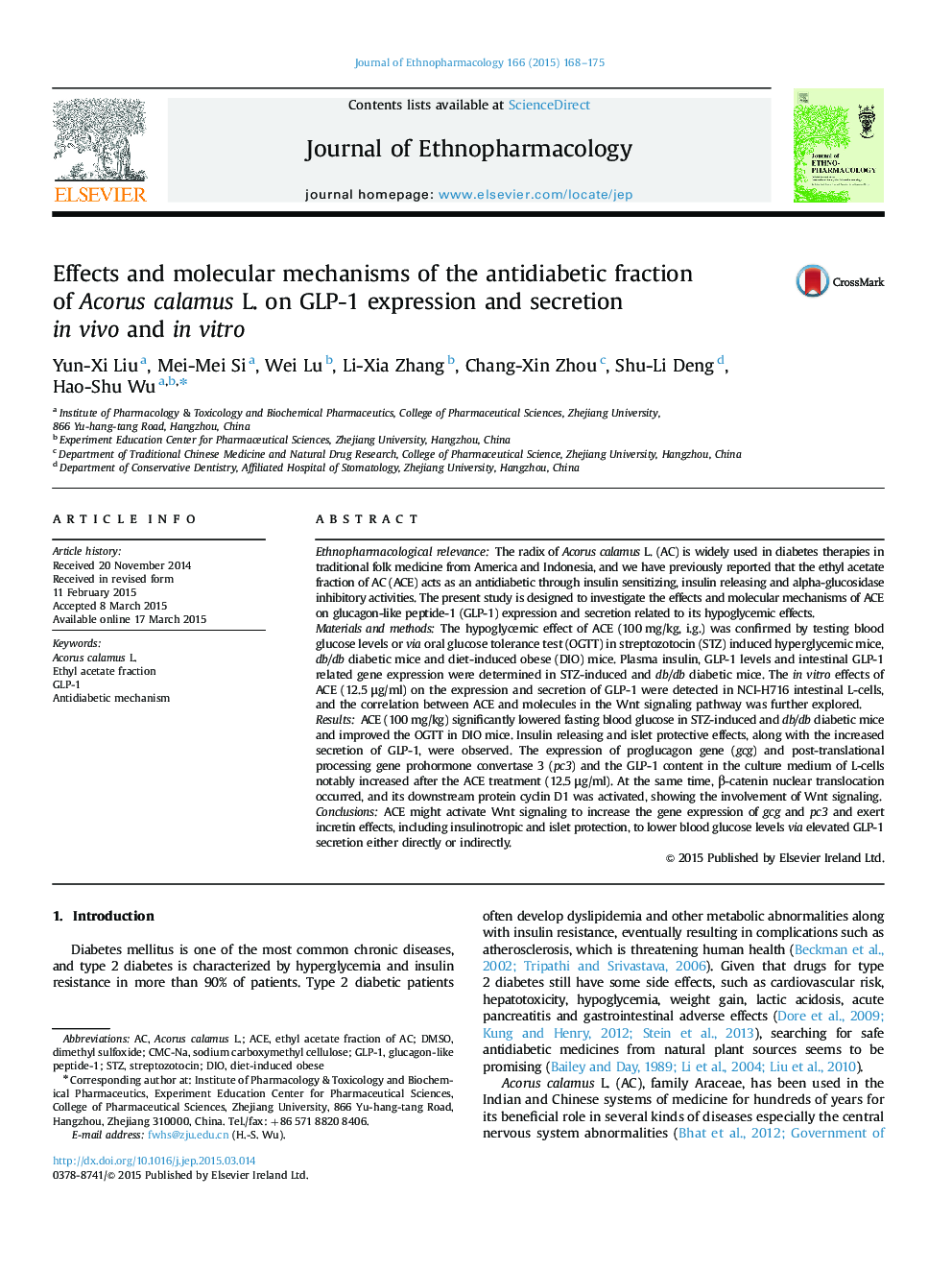| کد مقاله | کد نشریه | سال انتشار | مقاله انگلیسی | نسخه تمام متن |
|---|---|---|---|---|
| 5835733 | 1560396 | 2015 | 8 صفحه PDF | دانلود رایگان |

Ethnopharmacological relevanceThe radix of Acorus calamus L. (AC) is widely used in diabetes therapies in traditional folk medicine from America and Indonesia, and we have previously reported that the ethyl acetate fraction of AC (ACE) acts as an antidiabetic through insulin sensitizing, insulin releasing and alpha-glucosidase inhibitory activities. The present study is designed to investigate the effects and molecular mechanisms of ACE on glucagon-like peptide-1 (GLP-1) expression and secretion related to its hypoglycemic effects.Materials and methodsThe hypoglycemic effect of ACE (100 mg/kg, i.g.) was confirmed by testing blood glucose levels or via oral glucose tolerance test (OGTT) in streptozotocin (STZ) induced hyperglycemic mice, db/db diabetic mice and diet-induced obese (DIO) mice. Plasma insulin, GLP-1 levels and intestinal GLP-1 related gene expression were determined in STZ-induced and db/db diabetic mice. The in vitro effects of ACE (12.5 μg/ml) on the expression and secretion of GLP-1 were detected in NCI-H716 intestinal L-cells, and the correlation between ACE and molecules in the Wnt signaling pathway was further explored.ResultsACE (100 mg/kg) significantly lowered fasting blood glucose in STZ-induced and db/db diabetic mice and improved the OGTT in DIO mice. Insulin releasing and islet protective effects, along with the increased secretion of GLP-1, were observed. The expression of proglucagon gene (gcg) and post-translational processing gene prohormone convertase 3 (pc3) and the GLP-1 content in the culture medium of L-cells notably increased after the ACE treatment (12.5 μg/ml). At the same time, β-catenin nuclear translocation occurred, and its downstream protein cyclin D1 was activated, showing the involvement of Wnt signaling.ConclusionsACE might activate Wnt signaling to increase the gene expression of gcg and pc3 and exert incretin effects, including insulinotropic and islet protection, to lower blood glucose levels via elevated GLP-1 secretion either directly or indirectly.
179
Journal: Journal of Ethnopharmacology - Volume 166, 26 May 2015, Pages 168-175